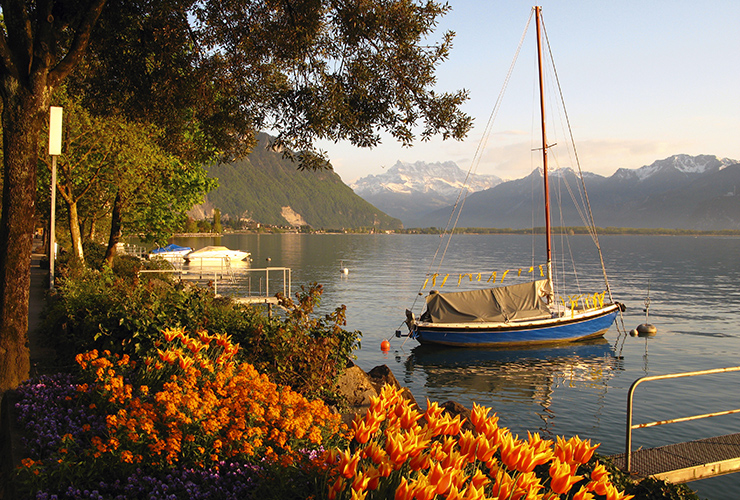Brussels, the wonderful capital of Belgium
Travelling across Belgium and Holland is very easy due to the small distances between noteworthy places to visit, even if the high concentration of attractions may require making choices, all depending on how much time you decide to spend in the region.
The best way to start a tour of Belgium is to land in its capital. Brussels is a sumptuous and fascinating city, as are the prestigious art collections of its museums and its magnificent main square, the Grand Place, where you can find the richest and most beautiful buildings in Brussels.
One of the symbols of Brussels is the Manneken-Pis, a cast bronze sculptural fountain of a young boy peeing. You will often see the young boy dressed in one of his 654 costumes, all of which are all on view at the Maison du Roi, on the Grand Place. A legend tells the story of a child who was peeing and in this act extinguished the fuse of a bomb that was about to explode on the square, thus preserving the city. Just outside the city center is another symbol of the city: the Atomium. Shaped like an atom, the building is formed by 9 metal spheres and reaches a height of 102 meters. Made for the 1958 Expo as a temporary construction, like the Eiffel Tower in Paris, it became a permanent structure and from its top sphere you can enjoy an amazing view of the city and surrounding landscape.
Belgium is also the home of many famous comics and Brussels is a must visit for their many fans. Here is where Tintin, the Smurfs and Lucky Luke all came to life originally. You cannot miss the comics’ path in downtown Brussels: over thirty giant murals are painted on the facades and walls of the city. The cosmopolitan atmosphere of the city center coexists with the cozy atmosphere of its cobbled streets, Art Nouveau buildings, coffee shops where you can indulge in sophisticated chocolates, and restaurants where you can enjoy excellent beers and mussels with fries, the typical dish of Belgium.
Flanders’ gems: Ghent, Bruges & Antwerp
Moving northwards, you will discover the charming land of Flanders that seems to be drawn directly from the paintings of Jan van Eyck. First stop is Ghent, the evocative city of lights, where during the evening the ancient palaces of the guilds built between the 12th and 18th centuries light up beautiful views on Graslei and Corenlei streets. The Saint Bavo Cathedral is a curious structure where Romanesque, Gothic and Baroque architectural styles all intermingle and come together. The next stop must definitely be Bruges, the most admired pearl of Flanders, and we suggest to explore our cultural experience section dedicated to this amazing town in more detail.
Your journey will then take you to Antwerp, perhaps the most dynamic of the Flemish cities, famous for being the birthplace of the genius of Nordic baroque, Peter Paul Rubens, and where about 85% of the global production of rough diamonds is stored. Actually, the best treasures of Antwerp are its art and architecture, its streets where you can pleasantly walk and admire monuments such as the immense Cathedral of Our Lady, with its seven naves and a Gothic tower with a 47 bells carillon.
Flowers, canals and windmills of Amsterdam
And then, onward to Holland. Spring and summer are ideal times to visit here as from March to May fields of flowers reach their blooming peak and the countryside appears in its full splendor. The capital of Holland is a city of canals and houses with typical Dutch facades nestled tightly amidst a maze of bridges crowded by bicycles. The seaside resort of Noordwijk is located 40 km. from Amsterdam. The town is known as the city of flowers par excellence and the best period to discover it is in April. For 66 years the floral parade moves every year from here to Haarlem covering a distance of over 40 km. In the surrounding area, the Keukenhof is not to be missed with its famous flower park where you can admire more than 7 million blooming tulips in its immense garden.
Delft and other Dutch cozy towns
Continuing southwards, you arrive in Delft, one of the most beautiful Dutch towns, thanks to its Old Church (Oude Kerk) surrounded by canals and alleys lined by historic houses. The town’s name is known worldwide for the production of Delft Blue pottery, which dates back to the 17th century and to this day you can visit the only factory left, the Koninklijke Porceleyne Fles. From here you can easily move to other Dutch towns like The Hague, Utrecht or Dordrecht, where you can round out your collection of memories that only Belgium and Holland provide.
 Hire Expertise
Hire Expertise Bespoke Itineraries
Bespoke Itineraries Travel Carefree
Travel Carefree We suggest you at least
We suggest you at least 